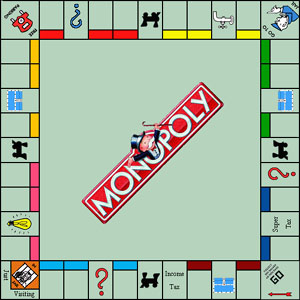The developing brain hungers for knowledge and understanding. The world is filled with bewildering systems that include contexts, value judgments, responsibilities, and outcomes. Systems are fascinating to kids and their developing brains. Building blocks, board games, and video games are systems that often require a lot of work to master. All of them have outcomes that are cumulative, lots of little achievements that ultimately lead to the big gain. They are systematic; the achievements logically combine to affect a goal. As you work through a systematic game, gathering your achievements, you find there is a flow.Games that have a flow are fun.Games - even video games - are also generally tactile. There are specific body movements to make, controllers to hold, buttons to press. This kinesthetic feedback reinforces the conceptual exercise of goal attainment. The kanban has this same kinesthetic feedback. You move a tag to "done," you feel the achievement. Games are also rewards based. If you do something in a game and get nothing from it in return, you tend not to do it again or, wind up hating that part of the game simply because it is wasting your time.
While tangible rewards are up to parents, the marker that you've reached a point of achievement is highly desirable for children. If they move five tasks to "done" and will get allowance / TV time / a rocket sled in return, they will do whatever it takes to move those tickets to "done." Remember, moving tasks 1,2,3 and 4 have a tangible kinesthetic reward because you can actually see your progress.It therefore came as little surprise to me when I started getting reports that people were using kanban with children.Patty Jennings Beidleman is using it for her daughter's confirmation coursework:David Anderson has told me how at his daughter's school they use a kanban to decide who can use what play equipment at what time. There are finite resources and each kid has a card. They can use a card to show which piece of equipment they will use. This limits the WIP of each of the individual toys, and ensures those kids who are playing get the best experience possible.Others have set up kanbans for tracking chores. I set up "fridgeban" below as an example of how you might do this with ... um ... traditional infrastructure. Chores start on the front of the fridge and are moved to the side when complete. Rock simple, very effective.Kanban works with a kid's brain. Cause and effect of chores and rewards is clearly laid out. Imagine never having to ask again "did you do your chores?" You may still have to quality check the work, but you won't have to nag them to action. The kanban will do the nagging for you. And, oddly enough, it's fun!







